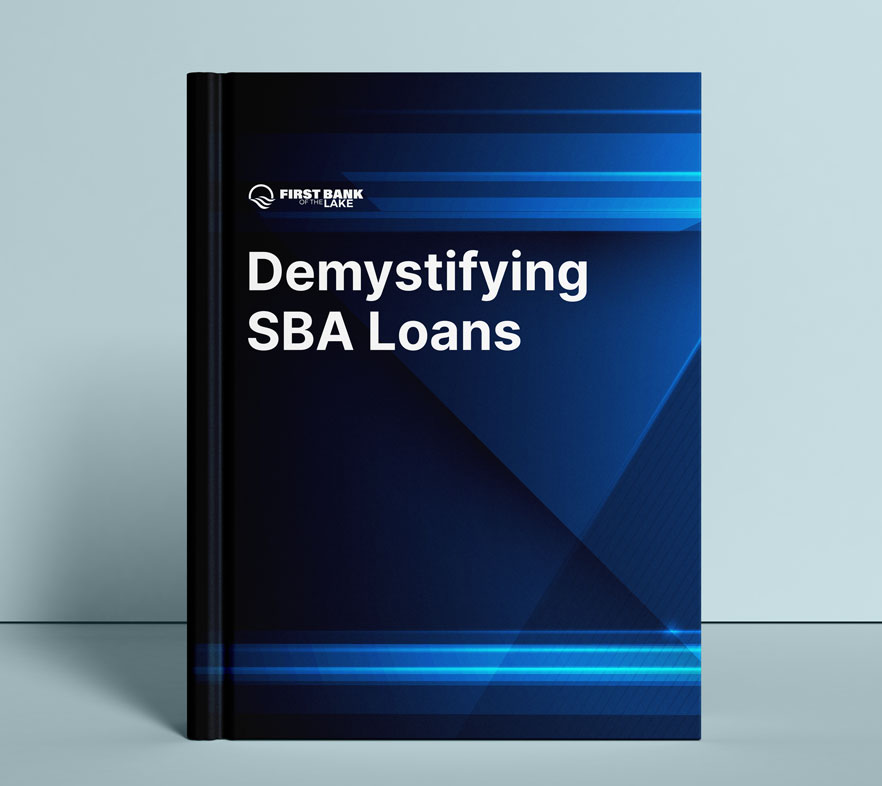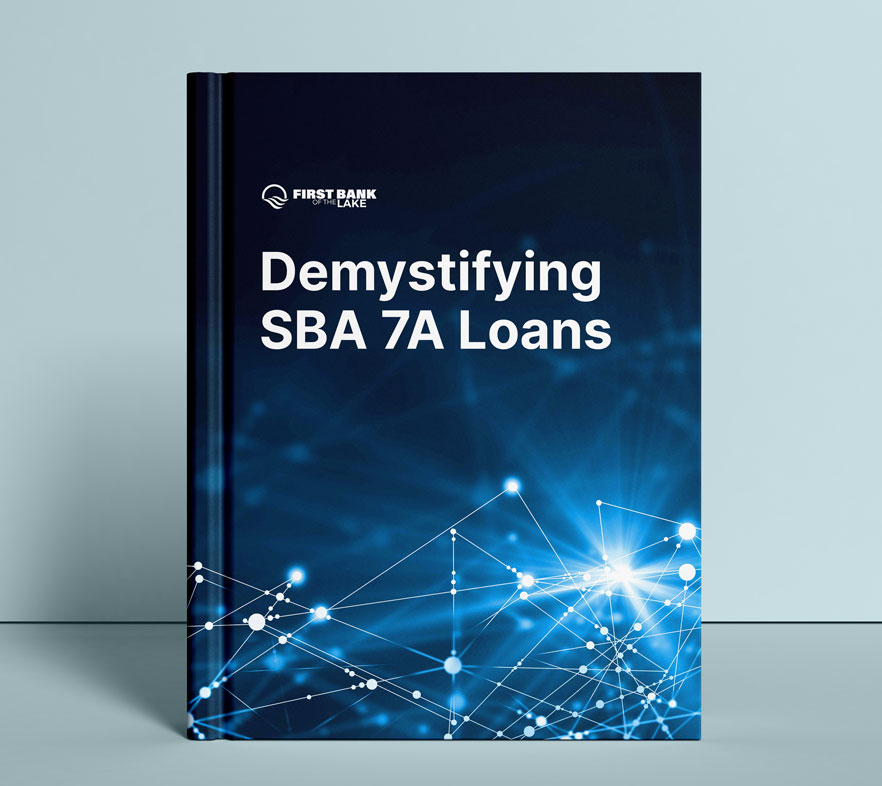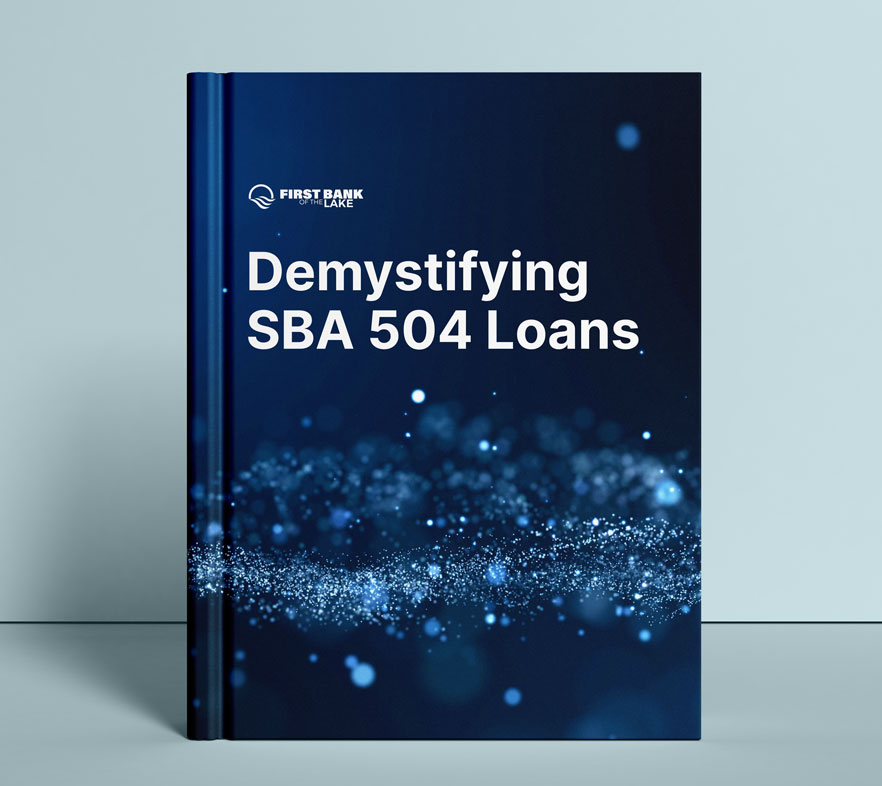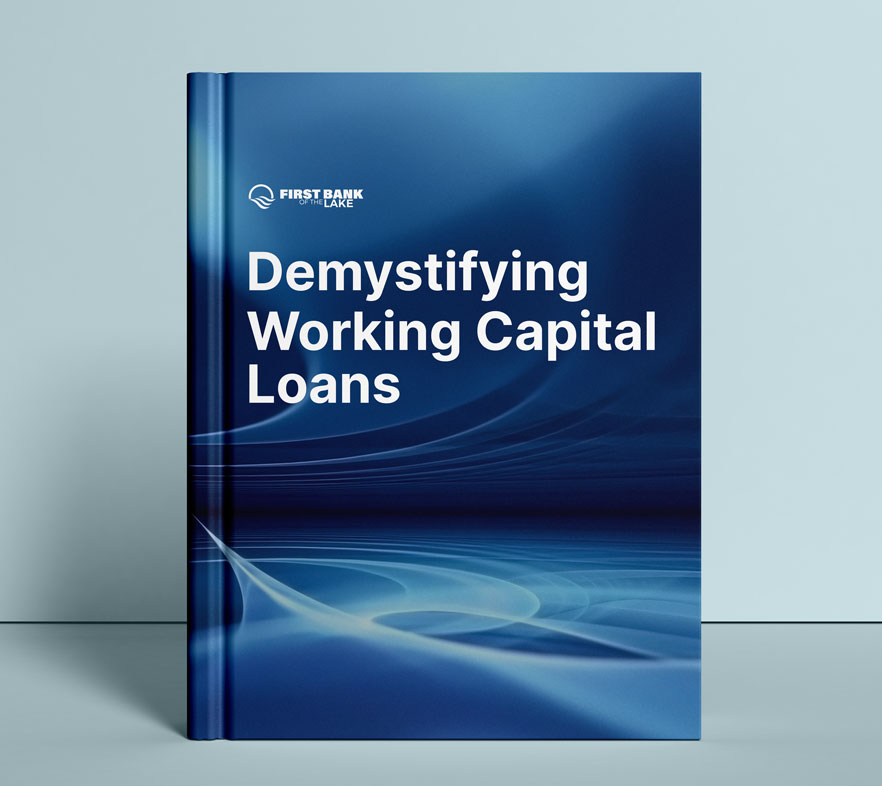Looking For the Best CD Rates?
No business or institutional funds allowed.
Home » Calculators »
Get Some of the Best CD Rates in the Country
Looking for the best CD rates and a way to maximize your savings? You’re in the right place. Certificates of Deposit (CDs) offer a secure way to earn interest on your money with virtually no risk. Some bank CD rates have climbed recently with even short-term CDs now paying several times the national average. In this article, you’ll learn how certificates of deposit work, see how rates compare and find out how much you can earn using our Certificate of Deposit calculator. Let’s go deeper and get started growing your money safely.
CDs are one of the safest places to keep your savings. They are essentially time deposits where you agree to leave your money in the bank for a set term, and the bank pays you a fixed interest rate in return. When the CD term ends, you get back your deposit plus the interest earned. Because you commit your money for that period, banks usually offer higher CD interest rates than savings accounts. And since your deposit is FDIC insured up to the legal limit per bank, your money is protected by the U.S. government with no risk to your principal. This combination of security and guaranteed return makes CDs a popular choice for risk-averse savers.
Today’s CD yields are especially attractive. For example, the national average interest rate for a 12-month CD is only about 1.63% APY, yet banks like First Bank of the Lake are offering 12 month CDs at much higher CD interest rates. In practical terms, that means your money can earn nearly three times more interest in a high interest CD than it would in the average U.S. bank’s CD. Next we’ll cover CD basics and common questions along with showing how much interest can be made with our CD calculator.
Use Our CD Calculator to See How Much You Can Earn
A Certificate of Deposit calculator is a powerful tool for financial planning and will help you estimate the returns on your investment. Use this CD calculator to find out how much interest you can earn on a Certificate of Deposit for a variety of terms. If you enter some simple information, the tool will provide your ending balance and APY.
Disclaimer: Information and interactive calculators are made available to you only as self-help tools for your independent use and are not intended to provide investment or tax advice. We cannot and do not guarantee their applicability or accuracy in regards to your individual circumstances. All examples are hypothetical and are for illustrative purposes. We encourage you to seek personalized advice from qualified professionals regarding all personal finance issues.
How Does a Certificate of Deposit Calculator Work?
How to Use the Certificate of Deposit Calculator – Data Entry
- CD Calculator Input – Initial deposit: Enter the amount of money you will open your CD with.
- CD Calculator Input – Months: Enter the term of the CD in months.
- CD Calculator Input – Interest rate: Enter the actual percentage and not the annual percentage yield (APY).
- CD Calculator Input – Compounding: The interest on your CD can be added to your CD balance regularly and is called compounding. This calculator allows you to choose the frequency.
How to Use the Certificate of Deposit Calculator – Outputs
- CD Calculator Output – Annual Percentage Yield (APY): This is the effective annual interest rate earned for the CD and is based on the compounding frequency and the interest rate.
- CD Calculator Output – Charts and Totals: These show growth in the CD value based on the deposit, months, interest rate and compounding.
No business or institutional funds allowed.
What is a Certificate of Deposit (CD) and How Do CDs Work?
Once you understand the core ideas behind a CD, the next step is learning how to maximize your earnings. The key is the Annual Percentage Yield which folds the compounding into a single number so you can compare offers fairly. Different term lengths and special products like no penalty CDs can add more flexibility or income.
CD compounding refers to how often the interest earned is added back into your CD balance. Most CDs compound interest periodically – monthly, quarterly, yearly, etc. Each time interest is credited, it becomes part of your principal, and afterward you earn interest on that larger balance. This “interest on interest” effect helps your money grow faster. Note that the advertised APY already accounts for compounding, so you don’t need to do any extra math. The APY tells you the total yearly rate including compounding.
Many people do not understand the differences between APY vs. APR. The Annual Percentage Yield is the effective yearly return on a deposit, including the effect of compounding. The Annual Percentage Rate is typically used for loans and is basically the simple interest rate without compounding. For deposit accounts like CDs, APY is the important number, and it tells you how much you’ll earn in one year, taking into account interest-on-interest. As an example, if a CD has a 4.00% APR that compounds monthly, its APY is higher and might be around 4.07%. Banks usually advertise the APY interest rate so you can easily compare offers. APY shows the total annual return you’ll get, whereas APR is more relevant to borrowing. When evaluating bank CD rates always look at the APY, since that gives you a true apples-to-apples comparison of earnings.
It’s important to know that FDIC-insured banks are protected by the Federal Deposit Insurance Corporation. In practical terms, if your total deposits at a bank are within FDIC limits, your CD money is completely safe, even if something happens to the bank. Always make sure you’re depositing with an FDIC-insured institution, which virtually all reputable banks are. For comprehensive financial education, government resources provide valuable guidance on managing your money safely.
Banks limit their insurance to cover CD deposits of $250,000 or less but larger CD deposits can be covered by other insurance products. The ICS and CDARS products let you place large deposits through one trusted bank, then automatically spread funds across a network of institutions, giving you multi-million-dollar FDIC insurance on CDs and money-market accounts. You will enjoy other substantial benefits like one rate, one consolidated statement, flexible maturities, no hidden fees, stable principal, competitive returns, and the ability to support local communities. Please note that we offer many other consumer services beyond CDs and CD Insurances.
Savers who want jumbo CDs must also split funds across banks or accept lower yields, track multiple statements, negotiate rates, or risk losing FDIC coverage. Using IntraFi’s network through a single local bank, the ICS and CDARS products automatically slice large deposits into sub-$250k chunks, place them at member institutions, and reunify them on one statement. You earn one competitive rate per term, select maturities from 4 weeks to 5 years, keep full access to money-market balances. In addition, you pay no hidden fees and gain multi-million-dollar FDIC insurance, while your funds stay local to finance community loans.
No business or institutional funds allowed.

Purchasing CDs and Withdrawing Your CD Funds
You can open a CD at most banks or credit unions in person or online. The process is straightforward, and you provide your identification information, choose your CD term and amount, and fund the account. Many people choose online banks for CDs because online banks often offer higher rates and easy digital applications. For example, you can open an online CD with First Bank of the Lake in minutes through our website. Just remember to stick with FDIC-insured banks and avoid any untrustworthy offers from non-insured entities. Once your CD is open and funded, you’ll receive a confirmation, and your money will start earning interest right away.
Use CDs for money that you won’t need for a while. They’re ideal for specific savings goals or idle funds you want to grow without risk. If you’re saving for a big purchase next year like a car or a wedding, a 12-month CD can securely boost your savings. Some people also put part of their emergency fund into a short-term CD to earn extra interest, while keeping another portion in regular savings for quick access. The key is to match the CD’s term to your timeline so don’t lock up money you might need sooner. CDs are also great for low risk investing because you know exactly what you’ll earn, making them work for conservative investors or retirees who want steady interest income. Generally, use CDs for funds that can sit untouched for the duration of the term, and you’ll earn more than in a standard savings account without sacrificing safety.
The best time to withdraw from a CD is when it matures at the end of the term. At maturity, you can withdraw your full balance, which is the original deposit plus interest, without any penalty. Banks will usually notify you as the maturity date approaches, and there’s often a grace period of 7–10 days after maturity during which you can withdraw the funds or make changes. If you withdraw the funds during that window, there’s no fee. However, if you need to withdraw the funds before maturity, you may incur an early withdrawal penalty which is a portion of interest and possibly a processing fee. To withdraw early, you typically contact the bank and accept the penalty.
The Many Types of CDs
Banks offer the best CDs to meet different needs and here are some common types of CDs. Here’s a rundown of common CD types and how they work, so you can choose the best option for your savings.
1. Traditional CD
This is the standard product. You deposit a lump sum for a fixed term, often from three months to five years, at a set rate. If you break the contract early like on a one-year CD, you forfeit interest, typically three to twelve months’ worth. Choose a term you can live with and consider laddering your CDs for greater flexibility.
2. Bump-Up CD
A bump-up CD lets you raise your rate once or twice during the term if market rates climb. Because that option favors you, the opening yield runs slightly lower than a comparable traditional CD. Confirm how soon you can request the bump-up and which external index the bank uses to measure rate changes.
3. Liquid CD
Sometimes called a no-penalty CD. Although First Bank of the Lake doesn’t offer Liquid CDs, this version allows you to withdraw the entire balance after a short holding period, usually seven days, with no fee. Yields sit between a high-yield savings account and a traditional CD. It is ideal for money you might need within a year but that you still want to earn a fixed return.
4. Zero-Coupon CD
Issued at a deep discount and paying no periodic interest, a zero-coupon CD matures at full face value. The imputed interest is taxable each year unless you hold the CD inside a tax-advantaged account, so placing it in an IRA avoids “phantom income.” First Bank of the Lake doesn’t offer Zero-Coupon CDs, but they work well for date-certain goals, such as future tuition or a loan balloon payment.
5. Promotional and no-penalty CDs
Banks sometimes offer short-term promotional CDs with above-market rates to attract new deposits. Read the fine print – minimums can be high and the rate may drop sharply after the promotional period. No-penalty CDs are a permanent category rather than a promotion, offering instant liquidity as described under Liquid CDs.
6. IRA and jumbo CDs
IRA CDs are held inside an individual retirement account, giving you tax deferral. With a Roth IRA, you will get tax-free growth. They suit conservative investors who want guaranteed principal within a retirement portfolio. Jumbo CDs require large minimums, often $100,000, and usually pay a modest yield premium over standard CDs. For very large balances, staggering multiple jumbo CDs across different banks preserves both insurance coverage and rate advantage.
No business or institutional funds allowed.

CD Terms and Rates
Check out First Bank of the Lake’s top‑yielding CDs. All deposits are FDIC‑insured up to $250,000 per depositor per ownership category. Here are the different types of rates we offer.
| Term | Example |
| 3‑month CD rates | Short‑term parking for property taxes or insurance premiums |
| 6‑month CD rates | Cash for a planned vacation or holiday spending |
| 1‑year / 12‑month CD rates | Lock in the best 1-year CD rates while you decide on larger investments |
| 3‑year CD rates | Medium‑range savings such as replacing a vehicle |
| 5‑year CD rates | Long‑term reserves that must keep pace with inflation |
The APYs we offer place First Bank of the Lake among the best 1 year CD rates nationally and consistently high above the average bank certificate of deposit. Compare CD rates regularly, especially 3, 6 and 12‑month CD offerings, because the interest‑rate curve can flip, making short maturities temporarily more lucrative than longer ones. A quick check with our CD calculator (above) will show how each option fits your timetable and maximizes total interest earned.
At leading online banks, the best 6-month CD rates generally yield only a small amount below the best 12-month offers. This makes the 6-month CD term a sweet spot for savers who want to capture today’s elevated rates while keeping cash reachable for near-term goals like tuition payments, a home-improvement deposit, or an emergency-fund addition.
CD terms range from as short as 3 months up to 5 years or more. The best term for you depends on when you’ll need the money. CDs are well suited for money you can leave untouched for the duration of the term and that’s how you lock in a higher rate.
Generally, you should match the CD term to your time horizon. If you know you need the funds in six months, 6-month CD rates are a smart choice. If you won’t need the money for a couple of years, you might opt for a longer term like an 20-month or 2-year CD if they offer higher interest rates to earn a bit more interest.
At the moment, short-term CDs offer very competitive yields. For example, 3-to-6 month CDs are around 4.30% APY, 1-year CD rates are roughly 4.40% APY, and longer terms (3 to 5 years) are about 4.00% APY. This means a 12-month CD is paying nearly as much as some 3 or 5-year CDs in today’s market. So, unless you find a significantly higher rate on a long term, you might choose a shorter term for more flexibility. On the other hand, if you come across a much higher rate on a multi-year CD and you don’t need the cash, locking it in could maximize your interest over time.
Always consider your liquidity needs: if there’s even a slight chance you’ll need access to your money, consider a shorter-term CD or one without withdrawal penalties. If you’re confident you won’t need the funds, a longer-term CD can lock in a higher interest rate. Not sure which to choose? You can spread your money across CDs with different terms, so you’re not tied to just one timeline.
How to Choose the Best CD
Start by comparing certificates of deposit interest rates across banks and credit unions. Focus on Annual Percentage Yield because that figure shows your real return. Online institutions and community lenders like First Bank of the Lake often publish the best CD rates available. The best 6-month CD rates are not the same as a five-year APY. Aim for the highest yield you can find without sacrificing safety or convenience.
Once you’ve found the right CD, open the account online or stop by a branch and fund it right away. At First Bank of the Lake, the process takes just minutes, and your money begins earning interest almost immediately. Be sure to note the maturity date on your calendar so you’ll know when it’s time to withdraw or renew it. By following these steps, you’ll lock in a high-yield CD tailored to your timeline, helping your savings grow with zero hassle and zero risk.
The amount of interest you earn from a CD depends on several factors:
- Initial deposit: More money deposited means more interest earned in total.
- APY: A higher APY interest rate will yield more interest.
- Term length: Longer terms generally offer higher rates and give your money more time to grow.
- Compounding: More frequent compounding adds interest slightly faster.
Good bank CD rates sit well above the national average. 12-month CD rates pay about 1.60% percent on average. Bank CD rates near four percent rank among the best CD interest rates available today. Put ten thousand dollars into a four percent CD and you earn roughly four hundred dollars in twelve months. At one percent you would earn only one hundred dollars. That simple jump triples your annual interest and shows why comparing yields matters.
To maximize your earnings, start by checking reputable banks for their best CD rates, making sure to compare accounts with similar terms for an accurate side-by-side view. Choose a CD term you can stick with until it matures. Let the interest stay in the account so compounding can work its magic. Avoid touching the balance before it’s due to prevent penalties that could eat into your earnings. These simple habits help you maximize growth from a high-yield CD and keep every bit of interest you’ve earned.
A CD ladder spreads your savings across several CDs that mature at different times. As an example, split twenty thousand dollars into four equal parts with terms of one, two, three and four years. One CD matures each year, and you can reinvest or withdraw that cash. Rising rates let you roll into new higher yields while older CDs stay locked at earlier highs if rates fall. The strategy boosts overall returns and gives periodic access to part of your money.
No business or institutional funds allowed.
Pros and Cons of CDs
There is a big difference between CDs, savings accounts and Money Markets. These accounts differ mainly in access and interest rates. Savings accounts and money market accounts allow you to withdraw money whenever you need and money market accounts even let you write a limited number of checks. CDs lock in your money for a set term and reward you with a higher fixed rate. You trade liquidity for a better yield.
Let’s take a look at the advantages and tradeoffs of CDs.
Pros of CDs
- Safe, guaranteed return: CDs are FDIC-insured and offer a fixed interest rate, so your principal and interest are secure.
- Higher rates than savings: You’ll usually earn more interest with a CD than with a regular savings or checking account.
- Easy to manage: Set it and forget it with no active management or worrying about market ups and downs.
- Various term options: CDs come in many term lengths (3, 6, 12, 18, 24 months, 3-year, 5-year, etc.), so you can pick one that fits your timeline.
Cons of CDs
Penalty for early withdrawal: If you withdraw before maturity, you lose some interest in penalties (you could even lose principal if the penalty exceeds interest earned).
Weighing these pros and cons will help you decide if a CD suits your needs. For many savers, the safety and higher rate of return outweigh the lack of liquidity.
CD Rates Glossary
Here is a simple Certificate of Deposit glossary to help understand the many terms and CD options.
Annual Percentage Yield (APY): The yearly rate of return on a CD, including compounding. This is the figure to compare between CDs.
APR: Annual Percentage Rate is a simple interest rate without compounding, commonly used for loans. Deposit accounts focus on APY.
Add-On CD: A CD that allows you to add more money to the account after opening.
CD ladder: A strategy of spreading money into multiple CDs with staggered maturities, to balance higher rates and liquidity.
CD term: The length of time your money is deposited in the CD until it matures (like 6 months, 1 year, 5 years).
Certificate of Deposit interest rates: The annual interest rate the CD pays, often expressed as an APY.
CD compounding: How often interest is added to the CD balance and could be daily, monthly, etc. With compounding, interest earns additional interest.
Fixed-Rate CD: A CD with an interest rate that stays the same for the entire term. Most CDs are fixed rate.
Jumbo CD: A CD that requires a very large minimum deposit (around $100,000). Jumbo CDs sometimes offer slightly higher rates.
Initial deposit: The amount of money you put in when opening a CD, also called the starting principal.
Liquid CD: A CD that allows early withdrawal without a penalty, also called a no-penalty CD. This offers more flexibility at a slightly lower rate.
Uninsured CD: A CD at a bank or institution that is not FDIC-insured. These carry the risk of loss if the bank fails.
Variable-Rate CD: A CD whose interest rate can change during the term though this is rare for CDs as most have fixed rates.
No business or institutional funds allowed.

CD Rates FAQ
Here are some of the most common questions we hear from clients regarding certificates of deposit (CDs).
Q: How does a CD work?
A CD with the best certificate of deposit rates locks in your money at a fixed CD rate for a set term, such as 6‑month, 1‑year or 2‑year. The bank pays guaranteed interest, quoted as APY, and returns your principal plus earnings at maturity.
Q: Are CDs FDIC insured?
Yes. Most bank CDs are FDIC‑insured up to $250,000 per depositor, per institution, and per ownership category. That protection makes comparing bank CD rates safer than chasing higher, uninsured yields elsewhere.
Q: Do CDs pay compound interest?
Nearly all CDs compound interest daily or monthly, so your CD interest rate effectively earns interest on interest. Use a Certificate of Deposit calculator to estimate how quickly certificate of deposit balances grow compared with a standard APY savings account.
Q: What CD term should I use?
Pick a term that matches your timeline and rate outlook. Short 6‑month or 9-month CD rates provide flexibility, while 1‑year and 2-year CD rates often offer the best CD rates. Ladder multiple maturities to compare CD rates and reduce reinvestment risk.
Q: Can you build credit with CDs?
Opening a CD by itself does not appear on credit reports, so it will not directly build credit. However, some lenders issue credit‑builder loans secured by a bank certificate of deposit, and timely payments on that loan can strengthen your score.
Q: What are benefits of a bank CD?
Bank CDs pair some of the top CD rates with principal safety. They deliver predictable CD yields, compound interest, and FDIC insurance, advantages many savings or money‑market accounts cannot match. High‑yield CD rates may even beat leading APY savings accounts.
Q: Can you donate CDs to charity?
Yes. You can name a qualified charity as payable‑on‑death beneficiary when opening the CD. Upon your passing, the charity receives the principal and any accrued CD interest, allowing you to donate without selling the certificate of deposit.
Q: Can You Bypass Probate with CDs?
Yes. Adding a payable‑on‑death (POD) beneficiary or titling the certificate of deposit as joint tenants with rights of survivorship lets the CD pass directly to heirs, bypassing probate. Principal and agreed CD rates stay intact until claimed.
Q: Are Certificates of Deposit (CDs) Tax‑Exempt?
Interest earned on a bank CD is taxable at the federal level and usually at the state level in the year it is credited. Only CDs held inside tax‑advantaged wrappers, like an IRA or 529 savings option, can shelter certificate of deposit interest.
Q: Can You Fund a 529 Plan With a CD?
You cannot directly transfer an existing CD into a 529. Instead, cash out the CD when it matures, then contribute the proceeds to the 529. Some plans offer an FDIC‑insured savings or CD option once the funds are inside the account.
Q: How to Give a CD as a Gift
Open a new high‑yield CD in the recipient’s name or add them as joint owner or beneficiary. For minors, use a custodial UGMA/UTMA CD. Provide gift documentation, then let them shop for the best CD rates when the term ends.
Q: How can you Inherit a CD?
If the CD lists a POD beneficiary, present identification and the death certificate to claim or retitle it without probate. Otherwise, the certificate of deposit joins the estate, and heirs must wait through probate before accessing or comparing renewal rates.
Q: What Is APY on a CD?
Annual Percentage Yield shows the total return a CD pays in one year, including compounding. Like an APY savings account, it helps savers compare CD rates, find the highest CD interest rates today, and use a CD calculator to estimate earnings.
Q: How to Open a CD for a Child?
Start by using a CD calculator to estimate potential earnings. Compare the best CD rates from banks and credit unions, then choose between a custodial or joint account. Complete the required paperwork for the minor, deposit the initial principal, and select a term that matches your savings goal to lock in a competitive rate.
Q: How Many CD Terms Are There?
Financial institutions typically offer CD terms ranging from three months to five years, though some list niche 9-month CD rates, 18-month CD rates, or five‑year certificates. Always compare certificate of deposit rates like 6‑month CD rates, 1‑year CD rates, and 2‑year CD rates before deciding.
Q: Are Online Certificates of Deposit (CDs) Safe?
When you open an online CD through an FDIC-insured bank or an NCUA-insured credit union, your money is federally protected up to $250,000 per depositor, per institution, making them as safe as branch CDs, but often with higher yields and some of the best rates available today.
Q: Jumbo CDs vs. Regular CDs?
A jumbo CD requires deposits of $100,000 or more and may advertise higher certificates of deposit interest rates than regular bank certificates of deposit. However, many banks now offer competitive high interest CD yields on accounts with minimums as low as $500, so compare CD rates carefully.
Q: What Can CDs Be Used For?
Certificates of deposit lock in a fixed APY interest rate, making them ideal for short‑term goals like tuition, a down payment, or an emergency fund. Savers also ladder CDs to capture the highest CD rates today while maintaining periodic liquidity.
Q: How Do I Close a CD?
At maturity, contact your bank during the grace period to withdraw funds, transfer them to an APY savings account, or roll into a new term with the best bank CD rates. Early closure triggers a CD early withdrawal penalty that reduces interest earned.
Q: What Is a CD Early Withdrawal Penalty?
An early withdrawal penalty on a CD is the loss of some, or in rare cases, all of the interest you’ve earned (an occasionally part of your principal) if you take out funds before the term ends. The exact penalty varies by bank, but it’s often the equivalent of three to twelve months of interest on the amount you withdraw.
Next Steps
Certificates of deposit can be a fantastic tool in your financial plan as they offer peace of mind with guaranteed growth. By understanding how CDs work and using strategies like comparing the best CD rates, laddering terms, and leveraging our Certificate of Deposit calculator, you can earn more on your hard-earned money without taking on risk.
If you’re ready to grow your savings, First Bank of the Lake is here to help. We’re proud to offer some of the highest CD rates in the nation along with personalized service. Open an online CD with us in minutes and watch your savings flourish. Use our CD calculator to plan, pick the term that fits your life, and let’s lock in a great rate for you. It’s time to make your money work as hard as you do. Start earning more with a First Bank of the Lake CD now.
Helpful Links
- Best CD Rates
- Certificates of Deposit
- Secured Line of Credit
- CDARS
- ICS
- Other Consumer Services
- FDIC CD Insurance
- More About Certificates of Deposit
- Commercial Loan Calculator
No business or institutional funds allowed.
*Annual Percentage Yield (APY) assumes interest will remain on deposit until maturity. APY is accurate as of date of publication. The maximum deposit is $500,000 per account. FDIC insurance is limited to the maximum allowed by law. Rates subject to change at any time without notice. Penalty may be imposed for early withdrawal. Fees could reduce the earnings on the account. No institutional funds allowed in branch and no business or institutional funds allowed online. Other restrictions may apply. IRA CDs are available for terms of 12 months or longer. Contact bank for details.
Download our free e-pubs on SBA loans and working capital loans.

Learn everything you need on how to get an SBA loan

Learn how to get an SBA 7a loan and grow your business

Find out how SBA 504 loans help small businesses

Understand how working capital loans expand your business
How Can We Help You Today?
Get Your Questions Answered Promptly

